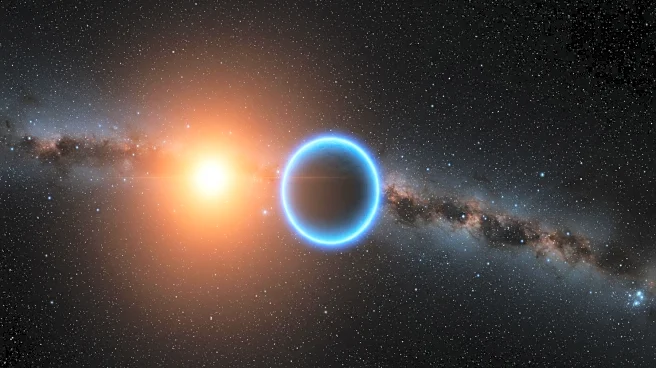What is the story about?
What's Happening?
Researchers have identified a potential exoplanet, Alpha Centauri Ab, orbiting Alpha Centauri A, the closest Sun-like star to Earth. Using the James Webb Space Telescope, scientists detected the exoplanet in the star's habitable zone, where conditions may allow for liquid water. The discovery was made through direct imaging, marking a significant milestone in exoplanet research. Alpha Centauri Ab is estimated to be a gas giant with a radius similar to Jupiter and a mass between 90 and 150 Earths. Although gas giants are not typically habitable, their moons could potentially support life. The findings challenge existing theories on planet formation in binary star systems.
Why It's Important?
The detection of Alpha Centauri Ab is crucial for understanding planetary systems beyond our own. As the closest Sun-like star, Alpha Centauri A offers a unique opportunity to study exoplanets in detail. The presence of a gas giant in the habitable zone raises questions about the potential for life on its moons, similar to those in our Solar System. This discovery could lead to new insights into the formation and evolution of planets in complex gravitational environments, impacting theories on planetary habitability and the search for extraterrestrial life.
What's Next?
Further observations are needed to confirm the existence of Alpha Centauri Ab and understand its formation. Researchers plan to conduct additional studies using advanced imaging techniques to gather more data on the exoplanet and its potential moons. These efforts may provide a clearer picture of the conditions necessary for life in binary star systems. The findings could also influence future missions aimed at exploring nearby exoplanets and assessing their habitability.
AI Generated Content
Do you find this article useful?

